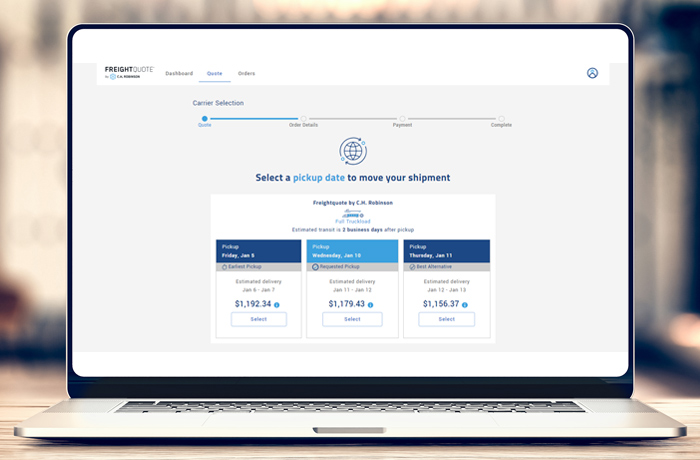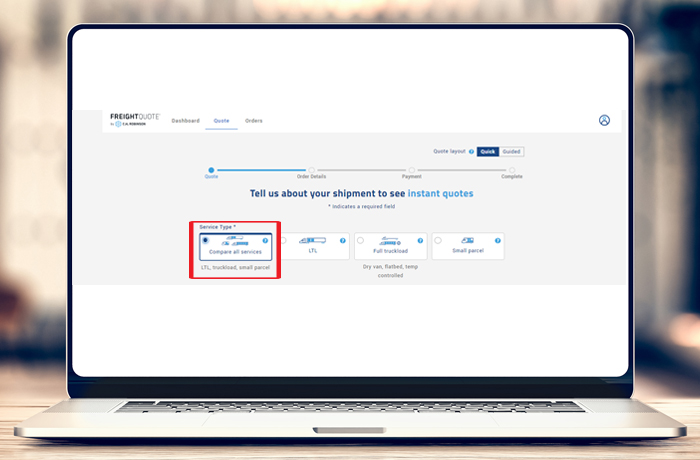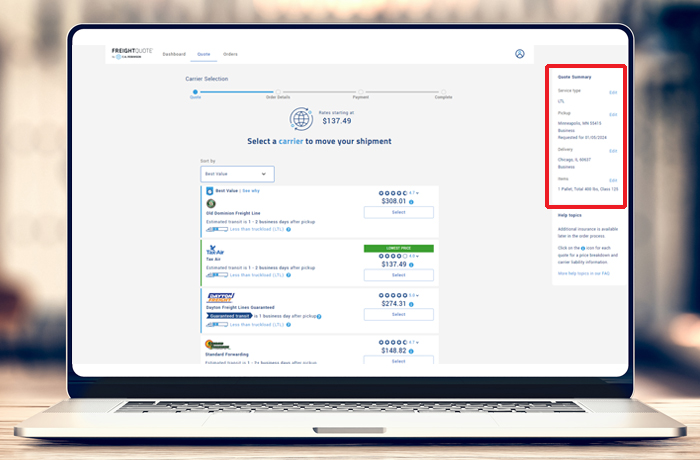Slash Your Shipping Costs: 5 Insider Strategies for Savvy Small Businesses
January 25, 2024

In today's competitive marketplace, every dollar saved counts, and shipping expenses are no exception. Excessive shipping costs can significantly impact your bottom line, eating into profits and potentially eroding the competitive edge you've worked hard to establish.
However, we have good news! Shipping doesn’t have to be an exorbitant expense. With the right moves you can save more on shipping without compromising the quality of service you receive.
5 steps to reduce shipping costs
Use these insider tips and tricks to navigate the complex world of freight shipping and save more on shipping—setting you up for long-term success.
1. Harness the power of brokers
Shipping brokers can be your secret weapon when it comes to accessing cost-effective shipping solutions. Their extensive networks, large shipping volumes, and expertise allows them to negotiate lower rates and pass the savings on to you. If you work with carriers directly, your price will reflect your volume alone, which may not be enough to warrant discounts.
When looking for the right broker, seek one that offers convenience and cost savings. For example, Freightquote® provides savings of up to 90% off carrier-direct pricing and also offers a lowest price guarantee. If you find a provider with a better rate on the exact same shipment, carrier, and lane, we’ll match it, add a 10% discount on that shipment, and give you a $50 promo code for your next LTL shipment.
2. Plan ahead for shipments
Procrastination can be costly when it comes to shipping. Last-minute shipments often require expedited or priority service, significantly increasing your overall shipping costs. By planning ahead and scheduling shipments well in advance, you can use standard shipping options and avoid rush fees.
When shipping full truckload, truckload prices change all the time. That’s why Freightquote provides three different pickup date options and associated pricing on truckload shipment quotes. If you’ve built in sufficient lead time, you can choose the least expensive day.

You might also consider creating a shipping calendar that aligns with your business's peak seasons or promotional events. This approach not only helps you secure lower shipping rates but also helps your products reach customers on time, enhancing customer satisfaction and loyalty.
3. Provide accurate shipment measurements, weights, and details
One common mistake leading to higher-than-expected shipping expenses is using inaccurate measurements and weights when quoting. Precision is key. Because carriers charge based on the dimensions and weight of a package, any discrepancies from your original quote can result in additional charges from the carrier. To avoid this, take the time to gather precise details before booking your shipment.
If you do not have physical access to your freight, getting the correct information requires communicating—phone or email works well—with the person who does. If there’s any question, ask them to confirm the measurements and weight of the freight. This is also a great time to confirm the details of their location so you can request extra services or equipment needed for both pickup and delivery locations in your quote. Things like liftgates needed for loading/unloading, limited access locations, and appointment requirements all need to be accounted for.
It is your shipment, so you will be responsible for any extra carrier fees assessed because of inaccurate shipment details. It’s important to confirm details before quoting to avoid any hassles and unexpected costs later.
4. Compare rates, modes, and service
Rather than getting quotes from each carrier separately, explore multiple shipping options all at once. Online shipping platforms, like Freightquote, can simplify the comparison process, allowing you to input shipment details and receive multiple quotes from various carriers. When using Freightquote to quote and book, you can quickly get quotes for multiple modes too. These side by side comparisons can help you save overall.

For instance, consolidating packages into a single LTL shipment may be more cost effective than multiple small parcel shipments. If you’re on the border of needing LTL or truckload, quote them both and compare.
If you have flexibility on delivery destinations, see if one is cheaper than another. The ability to pick up at a terminal may be more cost effective than a residential delivery with a lift gate. And it may be just as cost effective to deliver to a business as it is to pick up at a terminal. Check all options and be flexible for the most savings.
These kinds of details are easy to edit with Freightquote. Simply make your adjustments in the carrier quote selection screen and re-run your quote.

5. Protect your high-value shipments with insurance
While adding insurance to your shipments may seem like an additional expense, it can ultimately save you money. Accidents, damages, or losses during transit are unfortunate occurrences that can happen. Without insurance, you may find yourself absorbing the entire cost of damaged or lost goods.
Invest in shipping insurance as needed, adding coverage to high-value or fragile shipments. While this may add a small upfront cost, it provides peace of mind and financial protection, preventing substantial losses in the event of unforeseen incidents.
With Freightquote, it’s easy to add insurance, simply choose shippers interest insurance during your quote after choosing a carrier.
The bottom line: Saving more on shipping is possible
In conclusion, strategic thinking and a proactive approach can help slash any excessive shipping costs. Use one or more of the tips above for more efficient and cost-effective shipping.
Ready to start saving on shipping?
Create a free Freightquote account and unlock unlimited quotes and additional savings. No matter how many quotes you run, they’re all saved on your dashboard so you can see trends and savings opportunities over time no matter what variables you adjust.
